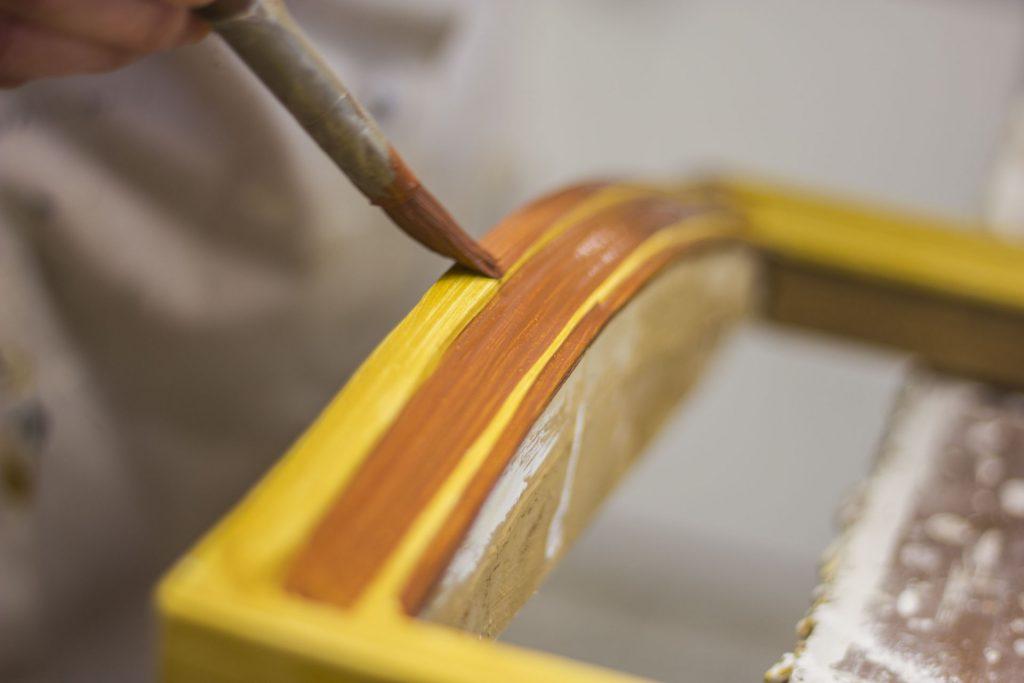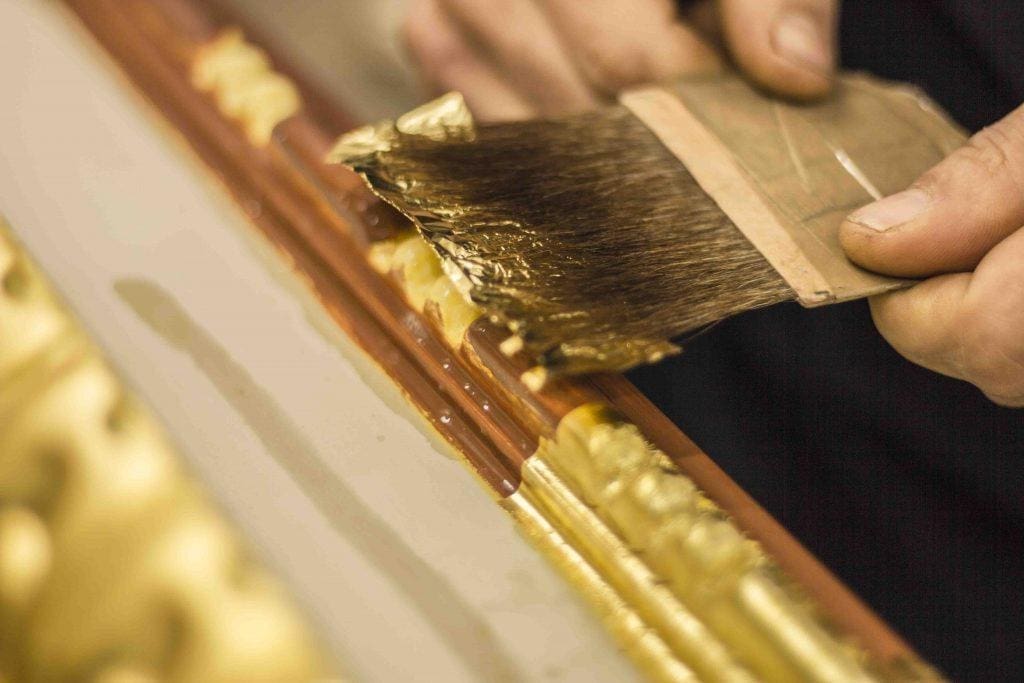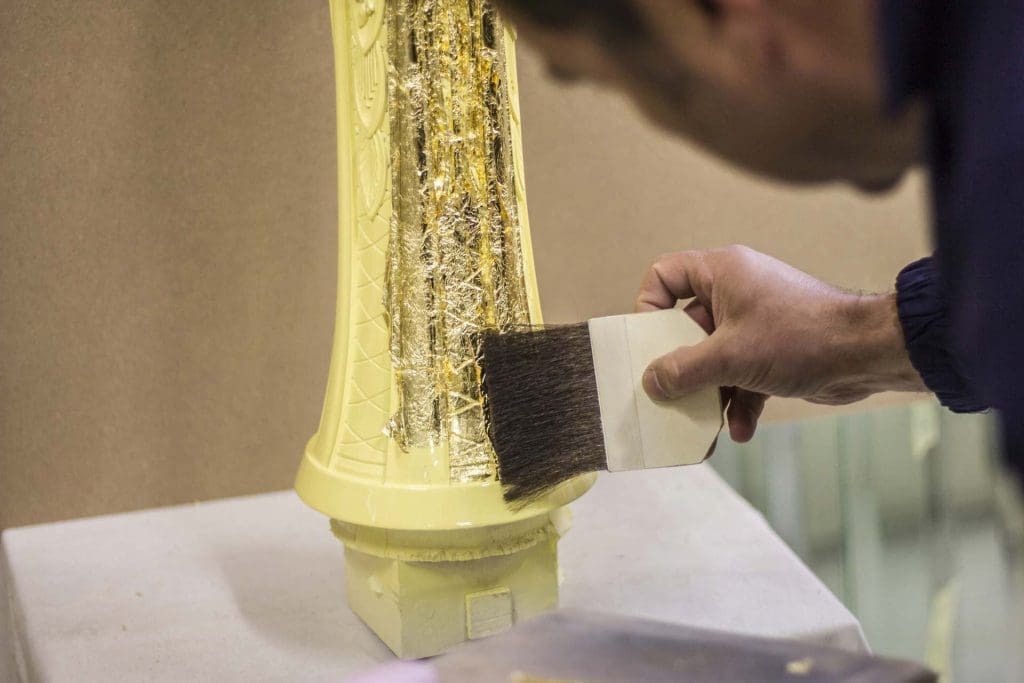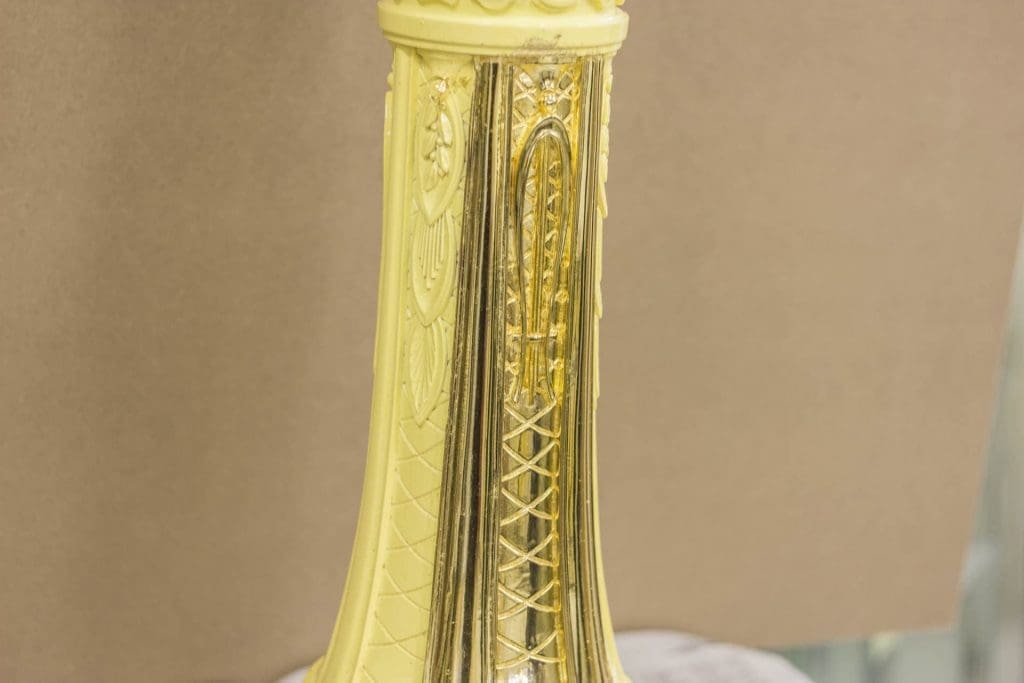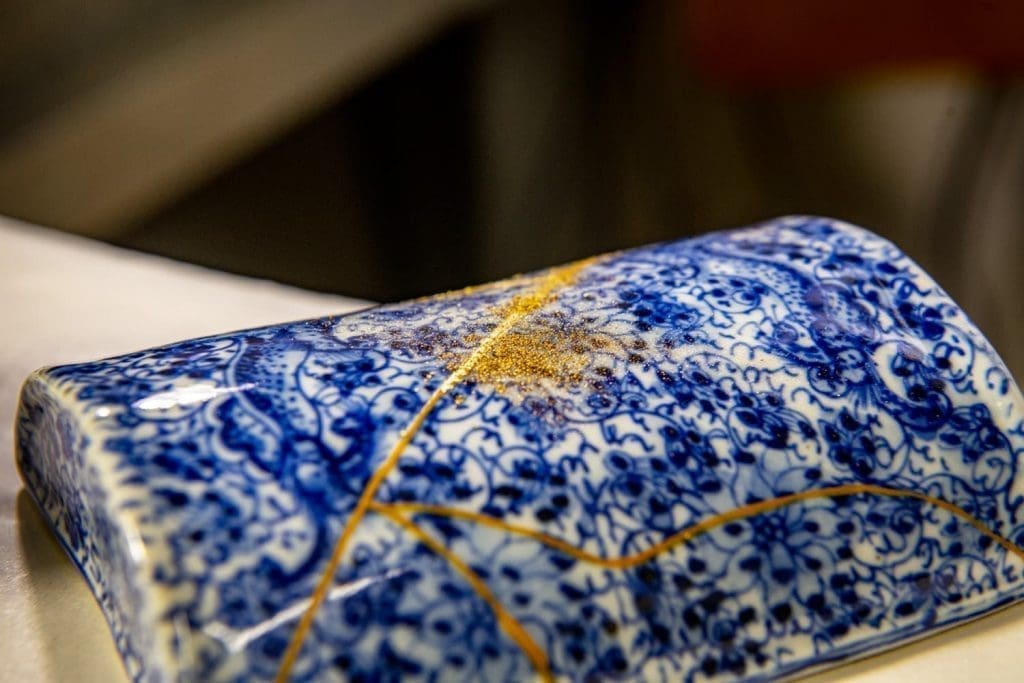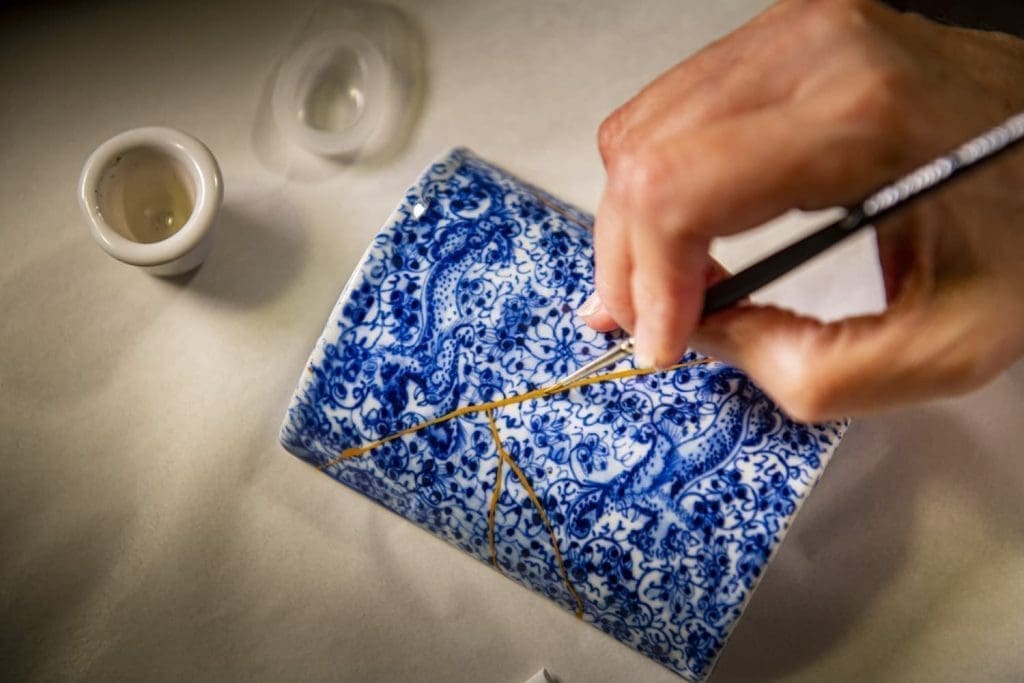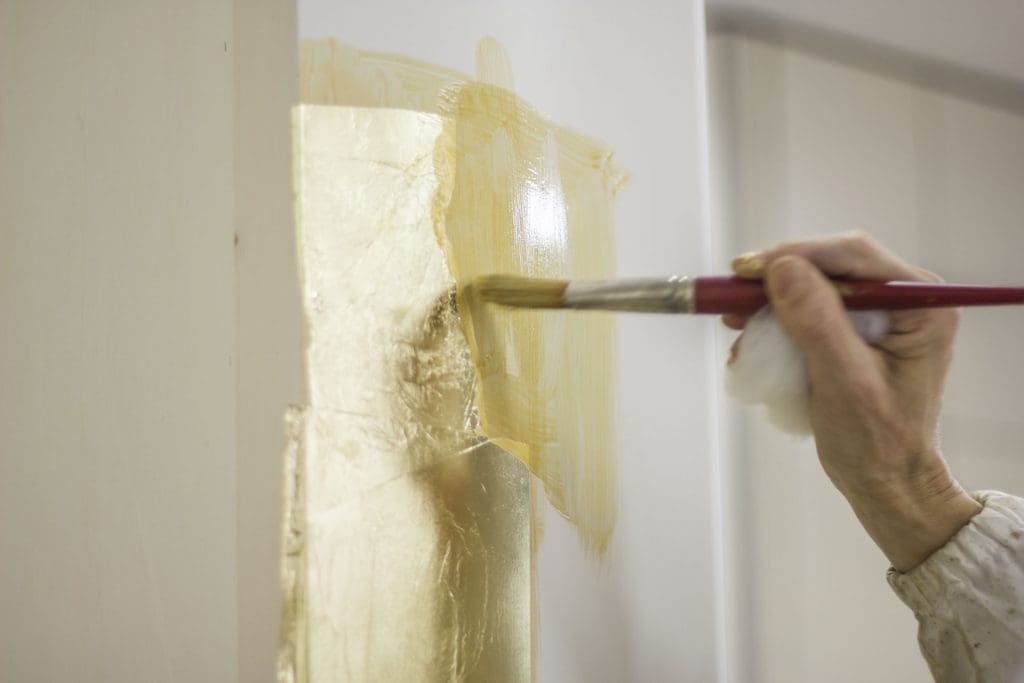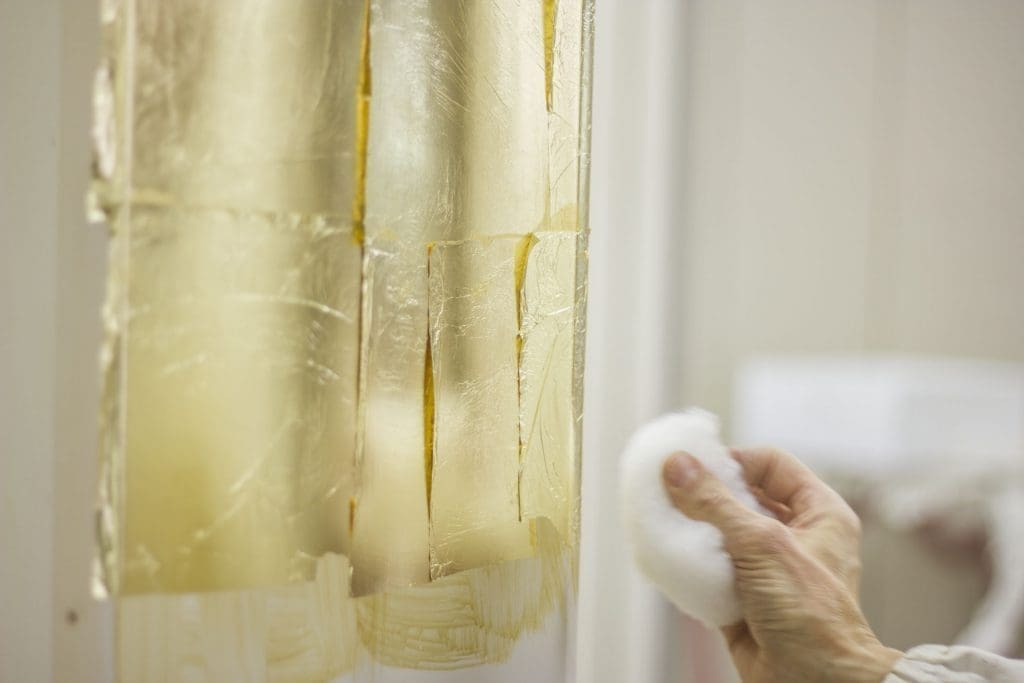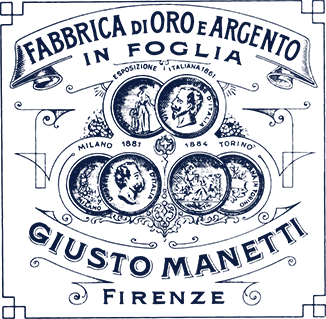Decorating with gold is as old as the history of great civilizations and the art of gilding has a millennial tradition, made of technique and talent, secrets jealously guarded and skills handed down from father to son. Behind the splendour of polyptychs, behind the golden stuccoes of the baroque churches, the domes and the halls of Versailles we find the extraordinary craftsmanship of generations of goldsmiths and the mastery of materials and tools each of which is the result of a unique experience and passion.
The secret behind perfect gilding
Gold plating is a complex and laborious technique thanks to which a surface is coated with a thin golden layer that ennobles and embellishes it. Its success depends on the type of support material, the conformation of the product, the desired aesthetic effect and the final placement of the golden object (inside or outside). There are therefore many variables at stake to achieve perfect gilding, but – as always happens in artisanal processes – the truly decisive elements are the ability of the goldsmith and the quality of the raw materials used, above all that of the golden leaf.
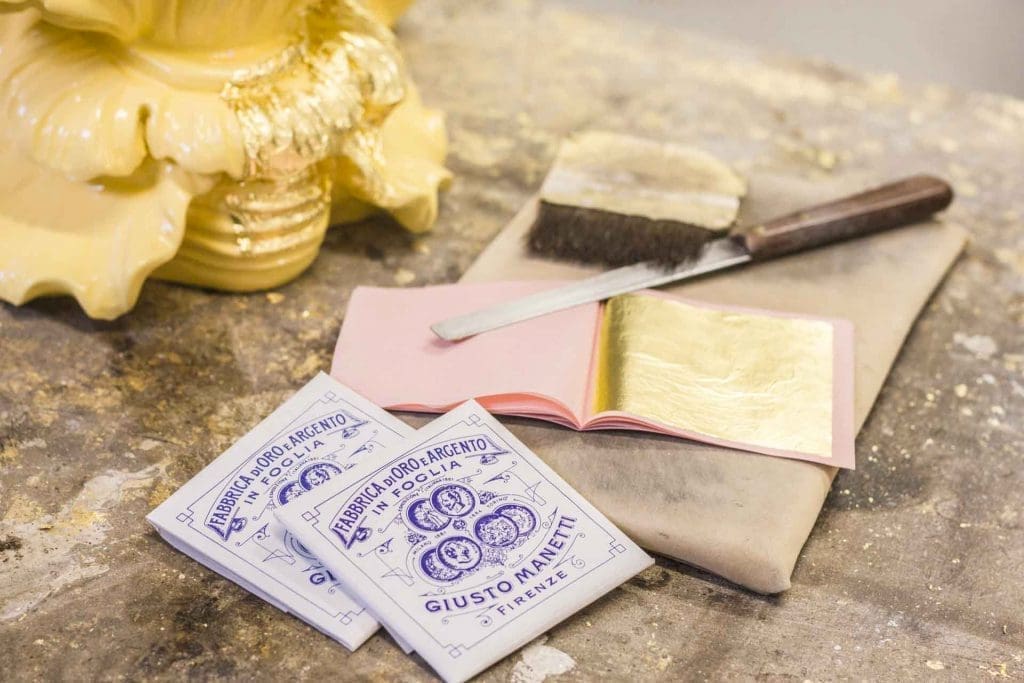
Gilding techniques
Gouache, mission, by brush, shell: there are many techniques to achieve gilding and just as many materials and tools needed to create it. The most precious and beautiful gold plating is obtained using the gold leaf. The two most important techniques to apply it are gouache gilding and mission gilding.
Gouache gilding
Gouache gilding is the most faithful to tradition, the most laborious and the most complex of all, but also the one that ensures the most precious result. It is the best choice if pure gold leaf is chosen. It requires five processing phases:
- gessoing, which consists in preparing the gilding base, obtained by mixing gypsum and rabbit glue dissolved in water then spread by brush in various homogeneous and thin layers, which – once dried – are sanded until a very smooth surface is obtained;
- bolus coating, mixed with fish glue dissolved in water and filtered with a gauze, it is applied in various layers using a brush;
- the actual gilding consists of applying the gold leaf on the perfectly dried and moistened bolus only on the part that will be covered by the leaf;
- another characteristic step of gouache gilding is the burnishing, that is polishing by means of agate stones that are carefully rubbed over the entire golden surface, or the coating, carried out with liquid bitumen or mecca varnish;
- the last phase is the protective coating that helps to preserve the gilding and to ensure its durability over time;
Mission gilding
Mission gilding is simpler, faster and more widespread, but less valuable than gouache gilding. This technique also requires five steps:
- the preparation of the base, which, depending on the support, may include sanding the surface to be gilded (for example for wood so as to make it smooth and non-porous) or the use of gilding preparation products (for example for gilding on metal);
- the paint and mission coating, laid in as thin a layer as possible;
- applying the gold leaf
- the finish, carried out for example with mecca varnish or liquid bitumen, needed to give, if required, an antique or more characterising appearance;
- the protective coating with shellac or acrylic products, useful to avoid oxidation of the leaf in the event that real gold leaf is not used.
Depending on the relevant needs, one can choose gold plating with water mission, alcohol mission or oil mission. The fundamental difference is in the drying times: water takes 15 minutes, alcohol takes half an hour and oil, used only by the most experienced craftsmen, takes up to 3 hours.
Brush gilding with gold or shell powder
A technique particularly suitable for gilding very deep inlays or for carrying out small finishing work is gilding by brush with gold powder or shell gold.
In this case, instead of the gold leaf, a compound of gum arabic and fine gold is used that is applied on the paint mission with an ease similar to that of water-colouring.
Gilding using imitation leaf
In order to give a precious appearance to objects, while containing processing costs, gilding with imitation gold leaf, aluminium leaf and copper leaf can also be carried out. All these leaves are applied almost exclusively using the water or alcohol mission gilding technique and require a final protective coating.


